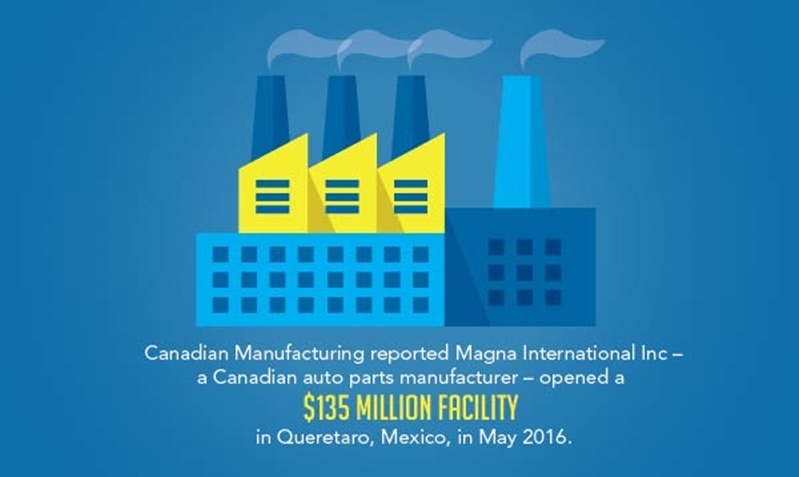Going global might not mean traveling to the other side of the world. As companies recognize the benefits of opening facilities closer to manufacturing resources in areas with beneficial trade conditions, they sometimes realize the best location is right next door - or one door over.
Industry Week detailed how U.S. companies open up partnerships with Canada and Mexico to take advantage of the new global economy. These three countries can use modern technology and communication platforms to coordinate supply chains, share resources and spot future opportunities.
Mexico is currently undergoing a major auto manufacturing boom. Many U.S. companies nearshore production facilities to their southern neighbor and now Canada is getting in on the action.
As more Canadian companies move auto part manufacturing to Mexico, all North American organizations should recognize the advantages of a unified market.
Nearshoring Canadian Facilities
There was a time when Canada manufactured more cars than Mexico. After the recession of 2008, however, Mexican investments in manufacturing paid off extremely well and now Mexico outpaces Canadian auto manufacturing, according to The Globe and Mail. Mexico produces auto products for North America and partners around the world.
 Canadian automotive manufacturing moves to Mexico in growing numbers.
Canadian automotive manufacturing moves to Mexico in growing numbers.Canadian businesses responded to the growth of the Mexican auto manufacturing industry by taking advantage of the production talent, trade agreements and infrastructure the Latin country has to offer. Canadian Manufacturing reported Magna International Inc - a Canadian auto parts manufacturer - opened a $135 million facility in Queretaro, Mexico, in May 2016.
This is not the first Mexican production plant for the company - it's actually Magna's thirtieth. This production plant demonstrates several of the factors that Canadian businesses favor when looking for offshoring advantages.
The Benefits Mexico Holds for Canada
The Queretaro plant is closer to U.S. consumers than similar options across the ocean. The facility creates supplies for additional manufacturing so keeping production nearby allows businesses to speed up the entire assembly process. A major advantage of a North American market with global ideals is partnerships and streamlined communications break down borders that once stood in the way of success.
Modern nearshoring also removes unfavorable preconceptions of Mexican manufacturing. CBC News described how the skilled labor and top-of-the-line facilities in the country allows for companies to add value to production processes, rather than settling for alternatives that offer equally low prices for inferior products. Mexico has long been an established source for auto parts, but in recent years it's become a global competitor in engineering innovation. This is especially important as auto products now host advanced features like onboard computers and smart dashboards.
Outside of the North American Free Trade Agreement - which makes it easy for Canada, the U.S. and Mexico to exchange goods and supplies - the Mexican government also has favorable trade agreements with multiple countries around the world. Canadian companies that build products in Mexico can import and export goods without high tariffs.
More Canadian Manufacturers Moving South
Auto manufacturing isn't the only industry building Mexican facilities. Another Canadian Manufacturing article reported Bombardier Recreational Products built a $35 million plant in Mexico, close to the U.S. Border, in early 2016. The facility is located in Juárez and will construct off-road vehicles.
Other industries moving to Mexico in waves include electronics, medical supply and aerospace manufacturing. The close proximity of Mexican facilities and prioritization of flexible manufacturing means companies can quickly adapt production to respond to consumer demands.
As long as Canadian businesses design production plants with the proper equipment and effective communication strategies in place from the get go, they can benefit from current Mexican advantages and recognize future opportunities.
Subscribe
Sign up and stay informed with tips, updates, and best practices for manufacturing in Mexico.






